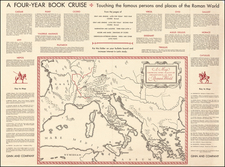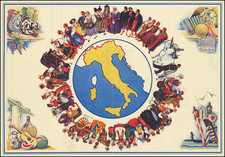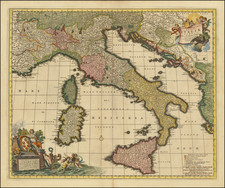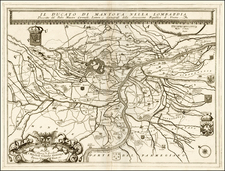Fine Archaeological Map of Rome, published by one if the leading Roman Architects and Archaeologists of the mid-19th Century.
Rare large-scale map of the archeological ruins in Rome, prepared by Luigi Canina, an Italian architect and archeologist, whose work provides an important view of the condition of the city and ancient artifacts in the mid-nineteenth century.
Canina's map depicts the monuments of ancient Rome, superimposed on a base map of the modern city.
Luigi Canina (1795 - 1856) was an Italian archaeologist and architect, born in Casale Monferrato in 1795 and died in Florence in 1856. He was a pupil of Ferdinando Bonsignore in Turin and settled in Rome in 1818. His most famous work includes a portion of the construction at the Villa Borghese (monumental neoclassical propylaea from Piazzale Flaminio); Casino Vagnuzzi outside of Porta del Popolo in Egyptian style. He is also known for his proposed reconstruction of the sanctuary of Oropa (1856).
Canina served as a professor of architecture at Turin. His most important archaeological works were the excavation of Tusculum in 1829 and of the Appian Way in 1848. The results were memorialized in publication made by his Partron, the Queen of Sardinia. In 1843, he was elected into the National Academy of Design as an Honorary member.
A wall of fragments assembled by Canina appears on the Appian Way next to the Casal Rotondo.
Canina is also noted for his studies of history and archeology. A column opposite the basilica of Saint Sebastian on the Appian Way close to Rome, records Canina's work in rescuing many Roman ruins and turning the road into the archeological park that it is today.












![Regnum Siciliae Cum circumjacentibus Regnis et Insulis… [shows Malta] (Heighten with Gold Leaf)](https://storage.googleapis.com/raremaps/img/small/50376.jpg)

